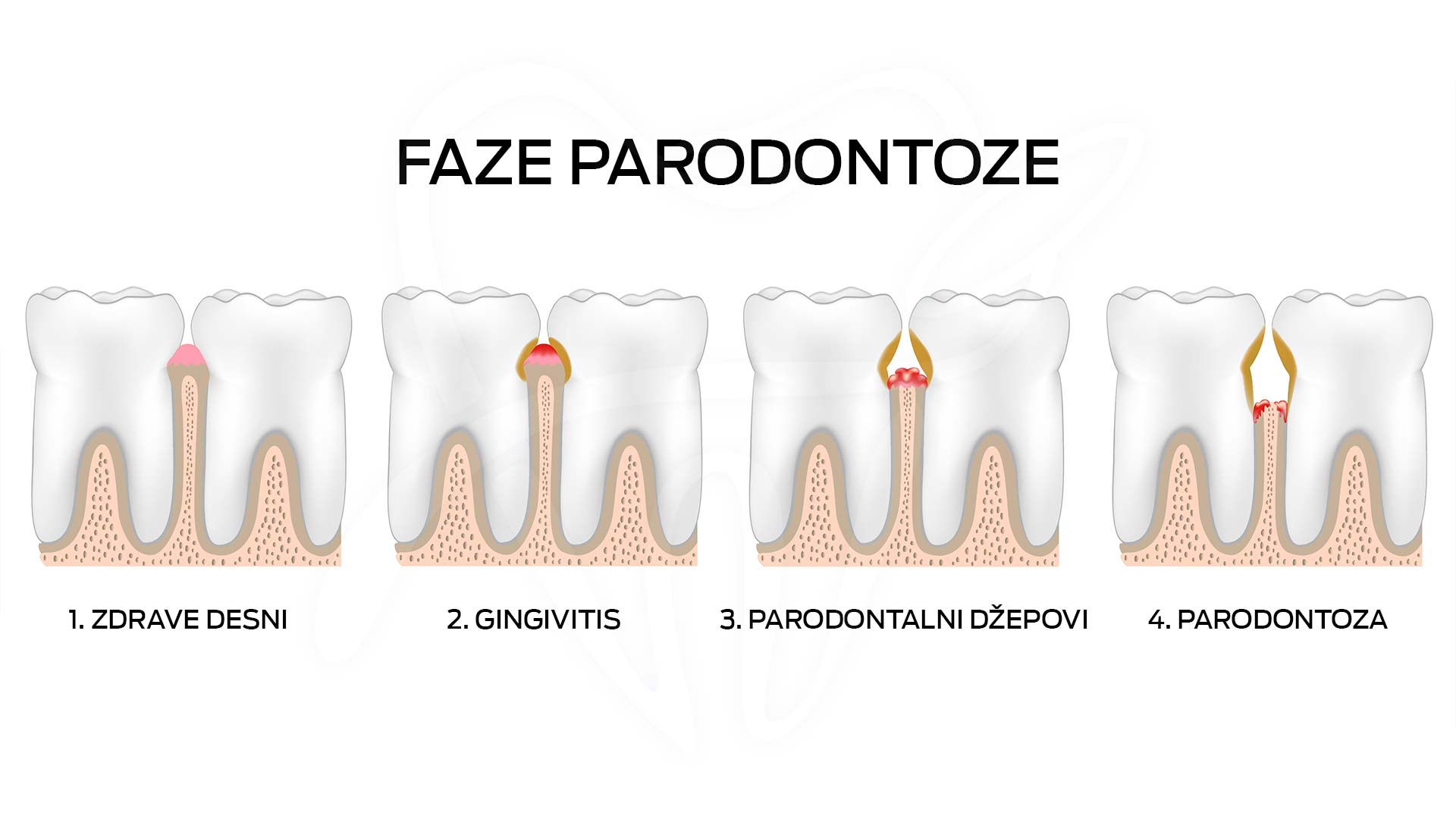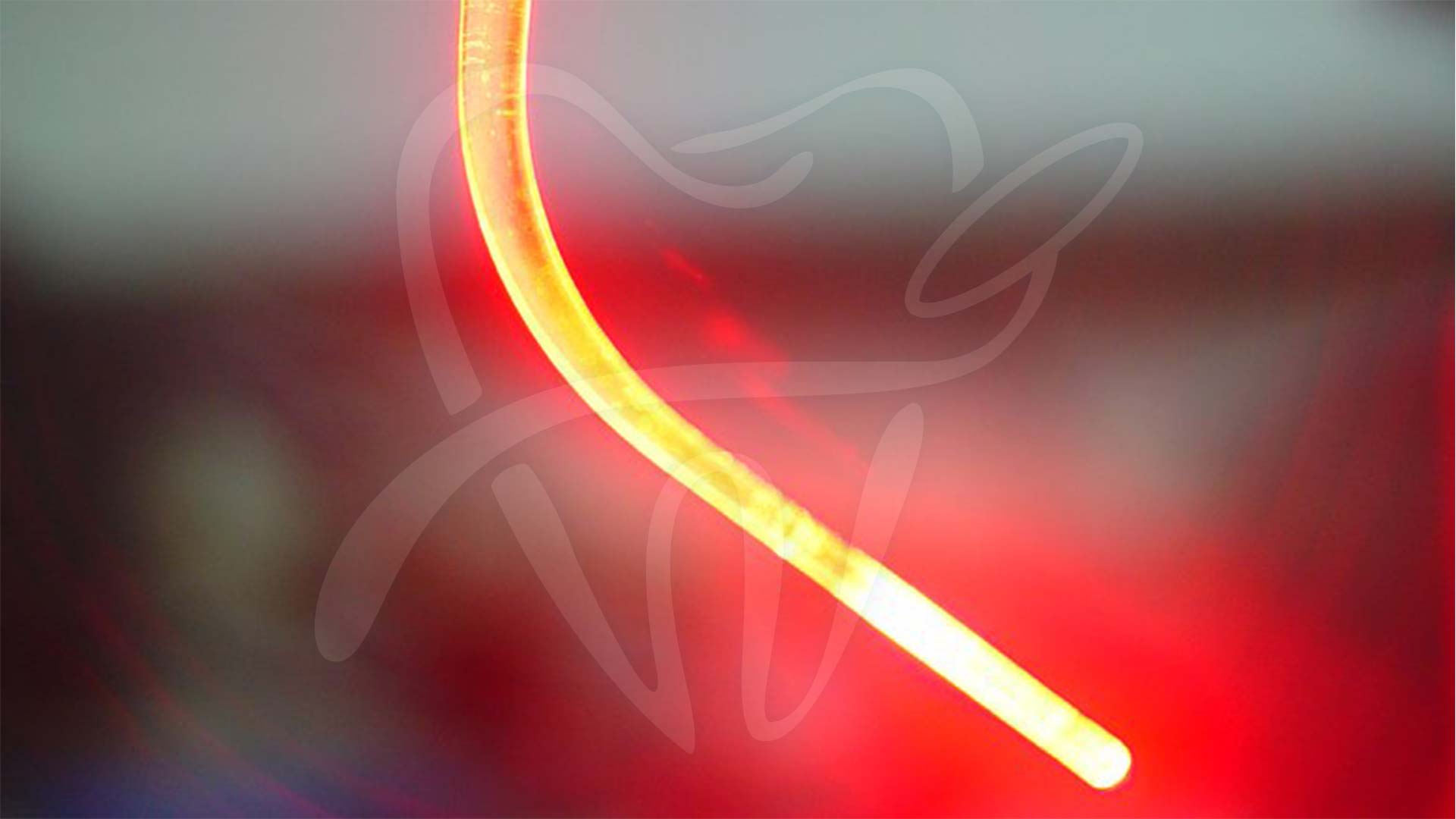
Da li vam se događa da vam desni krvare prilikom pranja zuba? Da li ste skloni krvarenju iz desni pri minimalnim provokacijama (snažan zagrižaj, korišćenje čačkalice, itd)? Osećate li tup, neodređen bol oko zuba? Da li su vam se zubi pomerili proteklih godina, bilo unapred ili u širinu, povećavajući razmak između zuba?
Ukoliko je makar na jedno od ovih pitanja odgovor DA, potrebno je da se obratite svom stomatologu jer postoji mogućnost da imate parodontopatiju, takođe poznatu pod kolokvijalnim nazivom parodontoza.
Parodontopatija je hronično inflamatorno oboljenje potpornog aparata zuba, dela tkiva koje okružuje zub i daje mu čvrstinu i stabilnost. Parodontopatija dovodi do dubinskog razaranja parodontalnog tkiva, što se završava gubitkom zuba. Ova bolest može se javiti u svim uzrastima, počevši od ranog detinjstva (agresivna parodontopatija), do pojave u srednjim i zrelim godinama (hronična parodontopatija). Drugi oblik je daleko češći, a karakteriše ga spor i postepen gubitak parodontalnog tkiva. Osnovni etiološki faktori u nastanku parodontalnih oboljenja su mikroorganizmi subgingivalnog dentalnog plaka i njihovi produkti, a pored prisustva mikroorganizama razvoj pardontopatije pomažu i loša oralna higijena, pušenje, neadekvatni protetski radovi i ispuni, kao i neka oboljenja organizma.
Prva i najčešća faza bolesti je upala desni (gigngivitis), koja, ukoliko se na vreme ne leči, prerasta u parodontopatiju, zahvata kost oko zuba i kasnije dovodi do pomeranja, labavljenja i napokon ispadanja zuba. Osnovni cilj terapije parodontopatije je eliminisanje patogenih mikroorganizama time što se uklone supragingivalnih i subgingivanlne naslage oko zuba, a zatim se čisti i sam džep na zubu. Blaži oblici, kao što je upala desni, mogu se sasvim neutralisati uklanjanjem naslaga i kamenca, uz edukaciju pacijenata o održavanju oralne higijene, kako se zapaljenje ne bi ponovilo.

Ako je parodontopatija uzela maha, ukoliko su prisutni parodontalni džepovi i gubitak koštanog tkiva, što se može uočiti kliničkim pregledom i analizom digitalnog radiograma, mada je često i evidentno iz jakog zapaljenja desni i krvarenja, potrebno je posegnuti za naprednijim tehnikama lečenja. U ovom stadijumu uklanjanje naslaga neće eliminasati veliki deo štetnih mikroorganizama, jer oni ostaju prisutni u parodontalnim džepovima i dubljim parodontalnim prostorima nepristupačnim za ručne stomatološke instrumente, a mikroorganizmi mogu da opsatnu čak i u radikularnom cementu i dentinskim tubulima. Primena antibiotika kao pomoćne terapijske procedure, bilo lokalno ili sistemski, u lečenju hronične parodontopatije ima bitna ograničenja jer može da stvori neželjene sporedne efekte, kao i da učini bakterije još otpornijim na duže staze.
Brz i svakodnevni napredak laserske tehnologije tokom protekle dve decenije doveo je do uvođenja lasera u svakodnevnu stomatološku kliničku praksu. Laser je svoju primenu našao u parodontologiji, u terapiji parodontalnih oboljenja, parodontalnoj hirurgiji i u terapiji periimplantitisa, endodonciji, zatim nakon vađenja zuba, prilikom sečenja vrha korena zuba i u drugim zahvatima.

Dentalni laser
Ipak, laser nije dovoljan kao terapijsko sredstvo za parodontopatiju, već predstavlja veoma korisno pomoćno sredstvo. Prvi problem lasera je to što uništava sve mikroorganizme, uključujući i one koji su korisni za organizam. Takođe, iako laser omogućava preciznu eliminaciju parodontalnih džepova, korišćenje lasera za sečenje tkiva, iako može delovati kao idealno rešenje jer nema bola i krvi, takođe može imati kontraefekte. Naime, često postoje čvrste naslage u dubini parodontalnog džepa, koje su nevidljive golim okom, a koje upijaju lasersku svetlost, greju se i proizvode veliku toplotu. Često ta toplota izaziva oštećenje i nekrozu tkiva, što je najgori mogući scenario za pacijenta.
Upravo iz ovih razloga u ordinaciji Cvejanović se koristi isključivo specijalna fotodinamska laserska terapija, koja isključuje antibiotike i omogućava da se na najbezbolniji način unište svi štetni mikroogranizmi, virusi i gljivice koje naseljavaju paradontalni džep.
Fotodinamska terapija je kiseonik-zavisna reakcija koja uključuje kombinaciju diodnih lasera niske talasne dužine (od 630 do 700 nm) i fotoaktivne materije. Ta fotoaktivna materija (engl. photosensitizer) vezuje se za ciljne ćelije i boji ih. Laserski zraci aktiviraju fotoaktivnu materiju i dovode do smrti ciljne ćelije. Ovom terapijom uništavaju se ciljne bakterije bez štetnog efekta na okolna parodontalna tkiva.
Lečenje parodontoze fotodinamskom laserskom terapijom počinje ručnim čišćenjem i obradom parodontalnih džepova pod lokalnom anestezijom, uklanjanjem kamenca i zubnih naslaga. Zatim se aplikuje plava boja koja se zatim aktivira pomoću lasera, pri čemu je bojom moguće targetirati mnoga mesta inače nedostupna instrumentima. Tehnika je izuzetno efikasna i dovodi to potpune eliminacije štetnih mikroorganizama ili do njihovog svođenja na tako neznatan broj da godinama neće biti u prilici da nanesu pacijentu ikakvu štetu. Tehnika je potpuno bezbolna i veoma brza.
Kada su najozbiljniji oblizi parodontopatije u pitanju, ako je došlo do većeg razaranja koštanog tkiva, tada je pored laserske terapije potrebna i hirurška intervenija u vidu podizanja desni, tretiranja laserom i postavljanja veštačke kosti i faktora rasta (emdogain) na ogoljeno mesto, što zajedno omogućava proces regeneracije koštanog i parodontalnog tkiva.
Iako su sve ove tehnike uspešne i oprobane, parodontopatski procesi se nikada ne mogu preokrentui. Bolest se može zaustaviti, ali kost i meka tkiva obolelog nikada ponovo neće biti onako vitalna kao što je to slučaj kod zdrave i mlade osobe. Tretman može sprečiti da parodontopatije dovede do klaćenja i ispadanja zuba u narednih 10, pa čak i 20 godina, što je veoma blizu potpunom izlečenju, ali tako pozitivan ishod moguć je samo ako se pacijent posle tretmana striktno pridržava saveta lekara i dolazi na kontrolne preglede.
